
LGM Galeria is a space dedicated to three specific purposes, to disseminate the pioneering art that champions the international contemporaneity of Latin American art while establishing a path towards its recognition by exhibiting movements and renown artists of the genre and the promotion and rediscovery of modern artists through a context based on research and curated by academics of national and international renown.
Under this edict, LGM Galeria for ArtBo 2022 presents the artworks of five Latin American artists whose dialogue intersects messages of contemporaneity and research through form and context. International contemporary artistic practice is represented with works by the Cuban group Los Carpinteros and the creative continuity of its most active member, Dagoberto Rodríguez. The socio-political context of their message is accompanied by the pictorial manifestos of the Mexican artist Fernanda Brunet, whose work, based on a feminist practice, is inspired by Japanese Manga and the prints of Katsushika Hokusai, ending in climactic and literally explosive pictorial expressions. Issues related to oil, pollution, economic power, dependency, and control are reflected in the work of Venezuelan artist Tony Vásquez, whose aesthetic sobriety manifests through his canvases, sculptures and historical photographs intervened in forceful relevant yet sublime messages. In monochromatic continuity, the sculptural structures of Mexican artist Miguel Angel Madrigal reveal complex urban infrastructures inspired by Piranesi's engravings. The exhibited works of Rafael Echeverri complements the established gallery manifesto through a relevant historical investigation that links his work to the most relevant modernist minimalist movements of the 20th century.
LGM Galeria has represented national and international artists since 1995. Founded by Luis Guillermo Moreno, its mission is the promotion and commercialization of modern and contemporary art worldwide. With a professional team specialized in Spain and Italy in areas such as expertization, valuation, appraisal and restoration of artistic heritage, it stands out for its extensive experience in the commercialization of Colombian and Latin American art, in Colombia and Spain, Venezuela, Mexico, China, Korea, Singapore, among other countries. One of the foundations of the work of LGM Galeria is centered on the interest in strengthening cultural ties that go beyond territorial borders and of thought, to make room for innovation and the free discernment of ideas, thus enabling the opening of new paths within the artistic world.
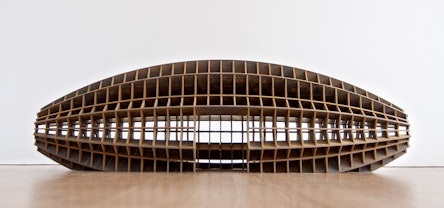
Havana, Cuba, 1992 – 2018 The Cuban group formed by Marco Antonio Castillo Valdés (Camagüey, Cuba, 1971) and Dagoberto Rodríguez Sánchez (Caibarién, Cuba, 1969), began their professional career in 1992, together with Alexandre Arrechea, who in 2003 began his solo career. In the beginning, they used recycled materials -especially wood- to make their works, and they adopted the name of their group in 1994 to embrace the union tradition of artisans and skilled workers. Fascinated by the intersection between art and everyday life, Los Carpinteros fused architecture, design, drawing and sculpture in quirky and unpredictable ways. His carefully crafted constructions promote a humorous visual language of contradiction and transformation, such as utilitarian versus useless and form versus function. His drawings and studies, which reference technical drafts and plans, poke fun at the early planning stages involved in creating art. The Los Carpinteros collective is a central piece of the puzzle in permanent (re) construction that is contemporary Latin American art. Despite the fact that these categories -regional, national or continental- are always reductionist and, in a certain sense, unsuccessful, the production of both artists is nourished by a seed from which all their works germinate: Cuba. In turn, the island shares with the continent, from the Gulf of Mexico to Patagonia, a series of circumstances that have reverberated strongly in the artistic creation of the entire region: historical facts, political-social events, a colonial wound solid and transversal like the Andes. And along with this, a cultural hybridity that defies all canons and a sense of humor capable of sustaining itself in the midst of the catastrophe. It is precisely this ambivalent character, of difficulty and enjoyment at the same time, which has been an inexhaustible source of inspiration for artists and has profoundly marked their creative universe. During its 26-year history, Los Carpinteros experimented with almost all disciplines -sculpture, photography, drawing, installation, video- using an enormous diversity of materials -wood, brick, paper, metal, plastic, concrete, fabric, among others. In all cases, his works challenge the public, causing a real intellectual check. Apparently it is a matter of form, for example, when artists manipulate or deform objects. However, in most cases, his works do not really present any physical change, they simply appear displaced from their context or their natural state. “All our figurative operations are regulated by the convention”, says Umberto Ecco. The rupture of meaning is then the great (de) construction of these artists, who called themselves 'carpenters' to contradict -although not totally- the function of a trade focused on the production of useful objects. After 26 years together, this collective was dissolved in 2018, to seek new individual horizons. However, his pieces are present in different public and private collections, such as the TATE Modern in London, the Georges Pompidou Center in Paris, the MoMA in New York or the Daros Latin America Collection in Zurich.
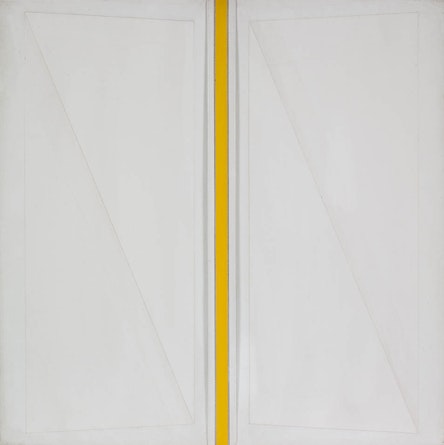
RAFAEL ECHEVERRI Rafael Echeverri was one of the last and most accomplished representatives of pictorial modernity in Colombia. His work rested on rational foundations and coherent developments and structures, unfolding with the logic of pigments and geometry, thus revealing an irreducible faith in man and his designs. His first works were representations of an expressionist type in which abstract and figurative elements are mixed, but in 1977 he began to approach geometry in whose forms he will invariably support his later production. Few painters in the country have achieved such a defined and distinctive language within abstraction. His work is monochromatic (white, black or primary colors), and shows a certain three-dimensionality as a result of the accumulation of layers of pigment and a double frame that produces intriguing protuberances on the canvas. Echeverri has been considered the closest Colombian painter to Minimalism since his work made clear at all times the intention to express much with less, that is, to reduce painting to its essentials, radically limiting its chromatism, enclosing it within the square and restricting its approaches to symmetrical compositions. His canvases visually reward the viewer with impeccable surfaces, pure colors, where a unique dialogue between two-dimensionality and three-dimensionality occurs, since while they emphasize the plane, they are subtly projected in space. Rafael Echeverri was one of the last and most accomplished representatives of pictorial modernity in Colombia. His work rested on rational foundations and coherent developments and structures, unfolding with the logic of pigments and geometry, thus revealing an irreducible faith in man and his designs. His first works were representations of an expressionist type in which abstract and figurative elements are mixed, but in 1977 he began to approach geometry in whose forms he will invariably support his later production. Few painters in the country have achieved such a defined and distinctive language within abstraction. His work is monochromatic (white, black or primary colors), and shows a certain three-dimensionality as a result of the accumulation of layers of pigment and a double frame that produces intriguing protuberances on the canvas. Echeverri has been considered the closest Colombian painter to Minimalism since his work made clear at all times the intention to express much with less, that is, to reduce painting to its essentials, radically limiting its chromatism, enclosing it within the square and restricting its approaches to symmetrical compositions. His canvases visually reward the viewer with impeccable surfaces, pure colors, where a unique dialogue between two-dimensionality and three-dimensionality occurs, since while they emphasize the plane, they are subtly projected in space. In his first works he achieved this dichotomy by means of folds in the canvases, later through the patient accumulation of layers of paint, and finally by using a kind of scaffolding or double frame through which his debt to constructivism becomes manifest.
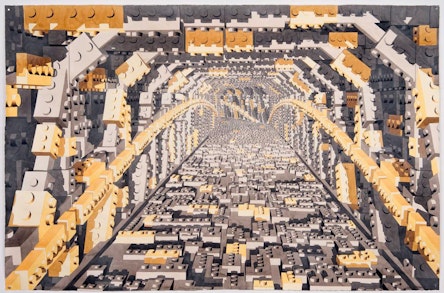
Dagoberto Rodriguez Sanchez was born 1969 in Caibarién, Las Villas and graduated from Instituto Superior de Arte (ISA), La Habana, Cuba in 1994. In 1992 he co-founded the collective Los Carpinteros. Their works have been exhibited in Museums and cultural institutions around the world, such as MOMA, Whitney Museum of American Art, Guggenheim in New York, Centre Georges Pompidou in Paris, Tate Modern in London and Museo Centro de Arte Reina Sofia in Madrid among others. Dagoberto Rodriguez is currently based working between Madrid and Habana. Combining architecture, design and sculpture, his work employs humor and irony to comment on core topics in art, politics and society. Watercolor forms a very important part of his creative process, it is a way of collaborating, registering and revising his ideas. Often these reflect a fantasy of a possible conceptual situation.
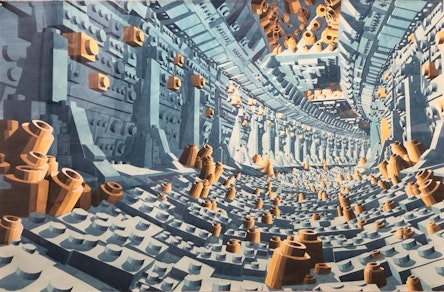
Dagoberto Rodriguez Sanchez was born 1969 in Caibarién, Las Villas and graduated from Instituto Superior de Arte (ISA), La Habana, Cuba in 1994. In 1992 he co-founded the collective Los Carpinteros. Their works have been exhibited in Museums and cultural institutions around the world, such as MOMA, Whitney Museum of American Art, Guggenheim in New York, Centre Georges Pompidou in Paris, Tate Modern in London and Museo Centro de Arte Reina Sofia in Madrid among others. Dagoberto Rodriguez is currently based working between Madrid and Habana. Combining architecture, design and sculpture, his work employs humor and irony to comment on core topics in art, politics and society. Watercolor forms a very important part of his creative process, it is a way of collaborating, registering and revising his ideas. Often these reflect a fantasy of a possible conceptual situation.

MIGUEL ANGEL MADRIGAL Madrigal explores various ways of manipulating both objects and materials. He has challenged gravity-balance not only physically but also visually as well as the conventionality of artistic supports. He works with shapes and objects that we can recognize in our daily lives, but when we arbitrarily relate them to others, they resignify radically changing our perception of them. He has exhibited in several spaces in Mexico, among which the Enrique Guerrero gallery stands out, in the Monterrey Femsa biennial, in the first, second and third National Biennial of Visual Arts of Yucatan, XXIV national meeting of young art Aguascalientes, in the national center of the arts, at the Chopo University Museum, at the National Center for the Arts, at the MUCA Rome, the Cultural Center of Spain in Mexico, at the Vasconcelos Library, at the Ibero-American University in Puebla, among others. As well as in international spaces in Spain, the US, Germany, Colombia, Canada, Guatemala, Honduras, El Salvador, Nicaragua, Hong Kong, Japan, France, Australia, New Zealand, Indonesia, China, the United Kingdom, to name a few. Among his awards are highlighted, belonging to the national system of creators 2015-2018 and 2011-2014, Residency at the Banff Center, Fonca, Alberta Canada, Residency at the Basilisco Center, Buenos Aires, Argentina, Residency at the Bilbao Arte Center, Bilbao Spain, Fellow of the National Fund for Culture and the Arts (FONCA) 2004 2005, Honorable Mention Second National Biennial of Visual Arts of Yucatan, Acquisition Award 3rd. Puebla De Los Angeles Biennial. Among the most outstanding collections are: Jumex Collection, Hakim, Gelman, Enrique Guerrero, Bilbao Art Foundation, The RISD Museum (of Rhode Island), the Chancellery Museum, the Ibero-American University of Puebla, the Carrillo Gil Museum, the Siqueiros workshop, Hendrix , Institute of Culture of Morelos, among others.

MIGUEL ANGEL MADRIGAL Madrigal explores various ways of manipulating both objects and materials. He has challenged gravity-balance not only physically but also visually as well as the conventionality of artistic supports. He works with shapes and objects that we can recognize in our daily lives, but when we arbitrarily relate them to others, they resignify radically changing our perception of them. He has exhibited in several spaces in Mexico, among which the Enrique Guerrero gallery stands out, in the Monterrey Femsa biennial, in the first, second and third National Biennial of Visual Arts of Yucatan, XXIV national meeting of young art Aguascalientes, in the national center of the arts, at the Chopo University Museum, at the National Center for the Arts, at the MUCA Rome, the Cultural Center of Spain in Mexico, at the Vasconcelos Library, at the Ibero-American University in Puebla, among others. As well as in international spaces in Spain, the US, Germany, Colombia, Canada, Guatemala, Honduras, El Salvador, Nicaragua, Hong Kong, Japan, France, Australia, New Zealand, Indonesia, China, the United Kingdom, to name a few. Among his awards are highlighted, belonging to the national system of creators 2015-2018 and 2011-2014, Residency at the Banff Center, Fonca, Alberta Canada, Residency at the Basilisco Center, Buenos Aires, Argentina, Residency at the Bilbao Arte Center, Bilbao Spain, Fellow of the National Fund for Culture and the Arts (FONCA) 2004 2005, Honorable Mention Second National Biennial of Visual Arts of Yucatan, Acquisition Award 3rd. Puebla De Los Angeles Biennial. Among the most outstanding collections are: Jumex Collection, Hakim, Gelman, Enrique Guerrero, Bilbao Art Foundation, The RISD Museum (of Rhode Island), the Chancellery Museum, the Ibero-American University of Puebla, the Carrillo Gil Museum, the Siqueiros workshop, Hendrix , Institute of Culture of Morelos, among others.

MIGUEL ANGEL MADRIGAL Madrigal explores various ways of manipulating both objects and materials. He has challenged gravity-balance not only physically but also visually as well as the conventionality of artistic supports. He works with shapes and objects that we can recognize in our daily lives, but when we arbitrarily relate them to others, they resignify radically changing our perception of them. He has exhibited in several spaces in Mexico, among which the Enrique Guerrero gallery stands out, in the Monterrey Femsa biennial, in the first, second and third National Biennial of Visual Arts of Yucatan, XXIV national meeting of young art Aguascalientes, in the national center of the arts, at the Chopo University Museum, at the National Center for the Arts, at the MUCA Rome, the Cultural Center of Spain in Mexico, at the Vasconcelos Library, at the Ibero-American University in Puebla, among others. As well as in international spaces in Spain, the US, Germany, Colombia, Canada, Guatemala, Honduras, El Salvador, Nicaragua, Hong Kong, Japan, France, Australia, New Zealand, Indonesia, China, the United Kingdom, to name a few. Among his awards are highlighted, belonging to the national system of creators 2015-2018 and 2011-2014, Residency at the Banff Center, Fonca, Alberta Canada, Residency at the Basilisco Center, Buenos Aires, Argentina, Residency at the Bilbao Arte Center, Bilbao Spain, Fellow of the National Fund for Culture and the Arts (FONCA) 2004 2005, Honorable Mention Second National Biennial of Visual Arts of Yucatan, Acquisition Award 3rd. Puebla De Los Angeles Biennial. Among the most outstanding collections are: Jumex Collection, Hakim, Gelman, Enrique Guerrero, Bilbao Art Foundation, The RISD Museum (of Rhode Island), the Chancellery Museum, the Ibero-American University of Puebla, the Carrillo Gil Museum, the Siqueiros workshop, Hendrix , Institute of Culture of Morelos, among others.

RAFAEL ECHEVERRI Rafael Echeverri was one of the last and most accomplished representatives of pictorial modernity in Colombia. His work rested on rational foundations and coherent developments and structures, unfolding with the logic of pigments and geometry, thus revealing an irreducible faith in man and his designs. His first works were representations of an expressionist type in which abstract and figurative elements are mixed, but in 1977 he began to approach geometry in whose forms he will invariably support his later production. Few painters in the country have achieved such a defined and distinctive language within abstraction. His work is monochromatic (white, black or primary colors), and shows a certain three-dimensionality as a result of the accumulation of layers of pigment and a double frame that produces intriguing protuberances on the canvas. Echeverri has been considered the closest Colombian painter to Minimalism since his work made clear at all times the intention to express much with less, that is, to reduce painting to its essentials, radically limiting its chromatism, enclosing it within the square and restricting its approaches to symmetrical compositions. His canvases visually reward the viewer with impeccable surfaces, pure colors, where a unique dialogue between two-dimensionality and three-dimensionality occurs, since while they emphasize the plane, they are subtly projected in space. Rafael Echeverri was one of the last and most accomplished representatives of pictorial modernity in Colombia. His work rested on rational foundations and coherent developments and structures, unfolding with the logic of pigments and geometry, thus revealing an irreducible faith in man and his designs. His first works were representations of an expressionist type in which abstract and figurative elements are mixed, but in 1977 he began to approach geometry in whose forms he will invariably support his later production. Few painters in the country have achieved such a defined and distinctive language within abstraction. His work is monochromatic (white, black or primary colors), and shows a certain three-dimensionality as a result of the accumulation of layers of pigment and a double frame that produces intriguing protuberances on the canvas. Echeverri has been considered the closest Colombian painter to Minimalism since his work made clear at all times the intention to express much with less, that is, to reduce painting to its essentials, radically limiting its chromatism, enclosing it within the square and restricting its approaches to symmetrical compositions. His canvases visually reward the viewer with impeccable surfaces, pure colors, where a unique dialogue between two-dimensionality and three-dimensionality occurs, since while they emphasize the plane, they are subtly projected in space. In his first works he achieved this dichotomy by means of folds in the canvases, later through the patient accumulation of layers of paint, and finally by using a kind of scaffolding or double frame through which his debt to constructivism becomes manifest.
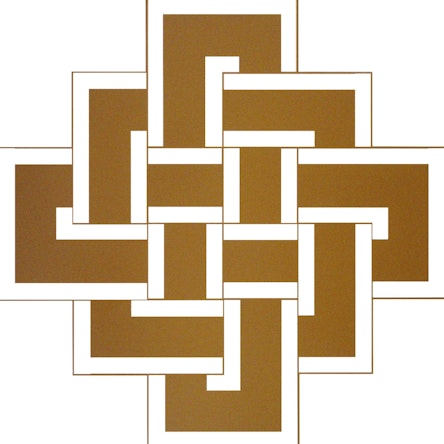
RAFAEL ECHEVERRI Rafael Echeverri was one of the last and most accomplished representatives of pictorial modernity in Colombia. His work rested on rational foundations and coherent developments and structures, unfolding with the logic of pigments and geometry, thus revealing an irreducible faith in man and his designs. His first works were representations of an expressionist type in which abstract and figurative elements are mixed, but in 1977 he began to approach geometry in whose forms he will invariably support his later production. Few painters in the country have achieved such a defined and distinctive language within abstraction. His work is monochromatic (white, black or primary colors), and shows a certain three-dimensionality as a result of the accumulation of layers of pigment and a double frame that produces intriguing protuberances on the canvas. Echeverri has been considered the closest Colombian painter to Minimalism since his work made clear at all times the intention to express much with less, that is, to reduce painting to its essentials, radically limiting its chromatism, enclosing it within the square and restricting its approaches to symmetrical compositions. His canvases visually reward the viewer with impeccable surfaces, pure colors, where a unique dialogue between two-dimensionality and three-dimensionality occurs, since while they emphasize the plane, they are subtly projected in space. Rafael Echeverri was one of the last and most accomplished representatives of pictorial modernity in Colombia. His work rested on rational foundations and coherent developments and structures, unfolding with the logic of pigments and geometry, thus revealing an irreducible faith in man and his designs. His first works were representations of an expressionist type in which abstract and figurative elements are mixed, but in 1977 he began to approach geometry in whose forms he will invariably support his later production. Few painters in the country have achieved such a defined and distinctive language within abstraction. His work is monochromatic (white, black or primary colors), and shows a certain three-dimensionality as a result of the accumulation of layers of pigment and a double frame that produces intriguing protuberances on the canvas. Echeverri has been considered the closest Colombian painter to Minimalism since his work made clear at all times the intention to express much with less, that is, to reduce painting to its essentials, radically limiting its chromatism, enclosing it within the square and restricting its approaches to symmetrical compositions. His canvases visually reward the viewer with impeccable surfaces, pure colors, where a unique dialogue between two-dimensionality and three-dimensionality occurs, since while they emphasize the plane, they are subtly projected in space. In his first works he achieved this dichotomy by means of folds in the canvases, later through the patient accumulation of layers of paint, and finally by using a kind of scaffolding or double frame through which his debt to constructivism becomes manifest.

Havana, Cuba, 1992 – 2018 The Cuban group formed by Marco Antonio Castillo Valdés (Camagüey, Cuba, 1971) and Dagoberto Rodríguez Sánchez (Caibarién, Cuba, 1969), began their professional career in 1992, together with Alexandre Arrechea, who in 2003 began his solo career. In the beginning, they used recycled materials -especially wood- to make their works, and they adopted the name of their group in 1994 to embrace the union tradition of artisans and skilled workers. Fascinated by the intersection between art and everyday life, Los Carpinteros fused architecture, design, drawing and sculpture in quirky and unpredictable ways. His carefully crafted constructions promote a humorous visual language of contradiction and transformation, such as utilitarian versus useless and form versus function. His drawings and studies, which reference technical drafts and plans, poke fun at the early planning stages involved in creating art. The Los Carpinteros collective is a central piece of the puzzle in permanent (re) construction that is contemporary Latin American art. Despite the fact that these categories -regional, national or continental- are always reductionist and, in a certain sense, unsuccessful, the production of both artists is nourished by a seed from which all their works germinate: Cuba. In turn, the island shares with the continent, from the Gulf of Mexico to Patagonia, a series of circumstances that have reverberated strongly in the artistic creation of the entire region: historical facts, political-social events, a colonial wound solid and transversal like the Andes. And along with this, a cultural hybridity that defies all canons and a sense of humor capable of sustaining itself in the midst of the catastrophe. It is precisely this ambivalent character, of difficulty and enjoyment at the same time, which has been an inexhaustible source of inspiration for artists and has profoundly marked their creative universe. During its 26-year history, Los Carpinteros experimented with almost all disciplines -sculpture, photography, drawing, installation, video- using an enormous diversity of materials -wood, brick, paper, metal, plastic, concrete, fabric, among others. In all cases, his works challenge the public, causing a real intellectual check. Apparently it is a matter of form, for example, when artists manipulate or deform objects. However, in most cases, his works do not really present any physical change, they simply appear displaced from their context or their natural state. “All our figurative operations are regulated by the convention”, says Umberto Ecco. The rupture of meaning is then the great (de) construction of these artists, who called themselves 'carpenters' to contradict -although not totally- the function of a trade focused on the production of useful objects. After 26 years together, this collective was dissolved in 2018, to seek new individual horizons. However, his pieces are present in different public and private collections, such as the TATE Modern in London, the Georges Pompidou Center in Paris, the MoMA in New York or the Daros Latin America Collection in Zurich.
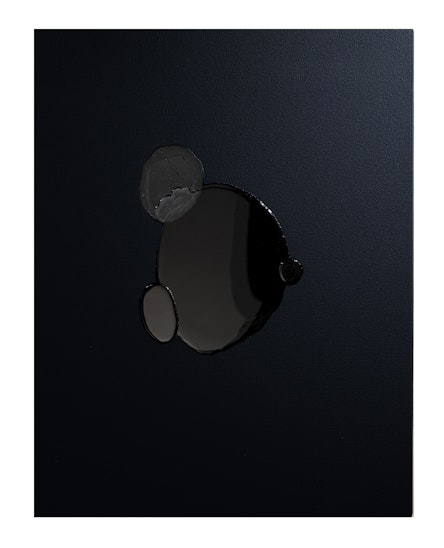
Artist statement Tony Vazquez-Figueroa (1970 Caracas, Venezuela) lives and works between Miami, Florida and Mexico City, Mexico. He received his BFA in Film from Emerson College (Boston, MA) in 1992 and continued his art studies at the San Alejandro Academy (Havana, Cuba) and then at the New York Studio School, where he obtained a scholarship to study in the institution. He then completed his formal training in 2002 at University College London's Slade School of Painting, under the tutelage of Jenny Saville. Tony Vazquez-Figueroa has explored the substance of crude oil and its many manifestations with the intention of using his artistic skills and vision to try to understand what happened to one of the world's richest countries that forced him and thousands of others to abandon their homeland and flee their homeland. Using crude oil as a key material in the creation of works, he has created a personal archive of the products that make up the memory and collective heritage of his country and his own.

Artist statement Tony Vazquez-Figueroa (1970 Caracas, Venezuela) lives and works between Miami, Florida and Mexico City, Mexico. He received his BFA in Film from Emerson College (Boston, MA) in 1992 and continued his art studies at the San Alejandro Academy (Havana, Cuba) and then at the New York Studio School, where he obtained a scholarship to study in the institution. He then completed his formal training in 2002 at University College London's Slade School of Painting, under the tutelage of Jenny Saville. Tony Vazquez-Figueroa has explored the substance of crude oil and its many manifestations with the intention of using his artistic skills and vision to try to understand what happened to one of the world's richest countries that forced him and thousands of others to abandon their homeland and flee their homeland. Using crude oil as a key material in the creation of works, he has created a personal archive of the products that make up the memory and collective heritage of his country and his own.
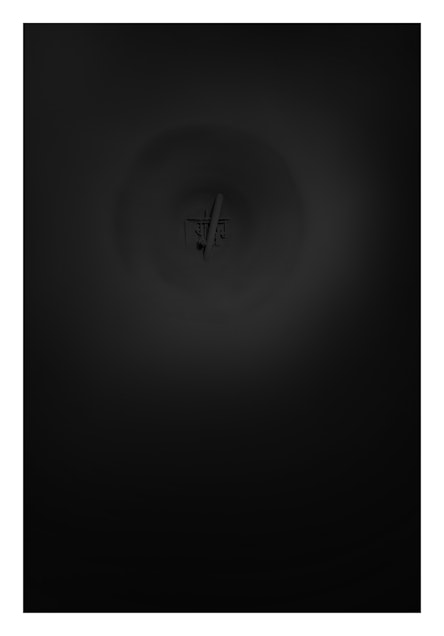
Artist statement Tony Vazquez-Figueroa (1970 Caracas, Venezuela) lives and works between Miami, Florida and Mexico City, Mexico. He received his BFA in Film from Emerson College (Boston, MA) in 1992 and continued his art studies at the San Alejandro Academy (Havana, Cuba) and then at the New York Studio School, where he obtained a scholarship to study in the institution. He then completed his formal training in 2002 at University College London's Slade School of Painting, under the tutelage of Jenny Saville. Tony Vazquez-Figueroa has explored the substance of crude oil and its many manifestations with the intention of using his artistic skills and vision to try to understand what happened to one of the world's richest countries that forced him and thousands of others to abandon their homeland and flee their homeland. Using crude oil as a key material in the creation of works, he has created a personal archive of the products that make up the memory and collective heritage of his country and his own.
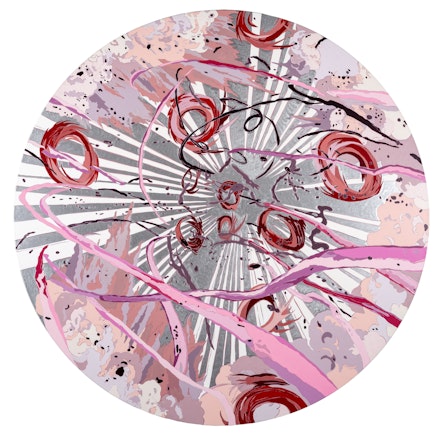
FERNANDA BRUNET - MANIFESTO My artistic practice is about nature and the human body. From there, I wanted to make painting, graphics, spinning and ceramics a body, with a presence and a scale that the resulting work confronts our dimension, thus dislocating the perception we have of ourselves and of the space that surrounds us I have wanted each work of mine to be a jolt and a stridency in the face of the anodyne and monotonous nature of existence; the images of my works can be seen, touched and heard, ultimately perceived, although not always fully understood or named: what does it matter if they are galaxies, volcanoes, clouds and waves; or from bodily fluids and spasms? I am not looking for a definitive and resounding truth, instead, I am interested in finding an oblique vision of that occasional and brief coincidence between the subject and the object, from a body to a landscape. A work that becomes a form of desire.

FERNANDA BRUNET - MANIFESTO My artistic practice is about nature and the human body. From there, I wanted to make painting, graphics, spinning and ceramics a body, with a presence and a scale that the resulting work confronts our dimension, thus dislocating the perception we have of ourselves and of the space that surrounds us I have wanted each work of mine to be a jolt and a stridency in the face of the anodyne and monotonous nature of existence; the images of my works can be seen, touched and heard, ultimately perceived, although not always fully understood or named: what does it matter if they are galaxies, volcanoes, clouds and waves; or from bodily fluids and spasms? I am not looking for a definitive and resounding truth, instead, I am interested in finding an oblique vision of that occasional and brief coincidence between the subject and the object, from a body to a landscape. A work that becomes a form of desire.
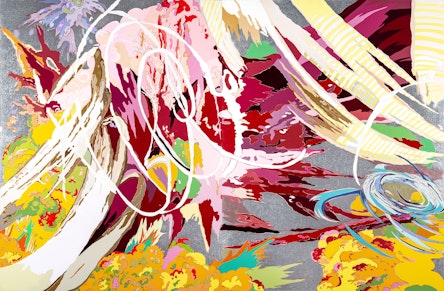
FERNANDA BRUNET - MANIFESTO My artistic practice is about nature and the human body. From there, I wanted to make painting, graphics, spinning and ceramics a body, with a presence and a scale that the resulting work confronts our dimension, thus dislocating the perception we have of ourselves and of the space that surrounds us I have wanted each work of mine to be a jolt and a stridency in the face of the anodyne and monotonous nature of existence; the images of my works can be seen, touched and heard, ultimately perceived, although not always fully understood or named: what does it matter if they are galaxies, volcanoes, clouds and waves; or from bodily fluids and spasms? I am not looking for a definitive and resounding truth, instead, I am interested in finding an oblique vision of that occasional and brief coincidence between the subject and the object, from a body to a landscape. A work that becomes a form of desire.
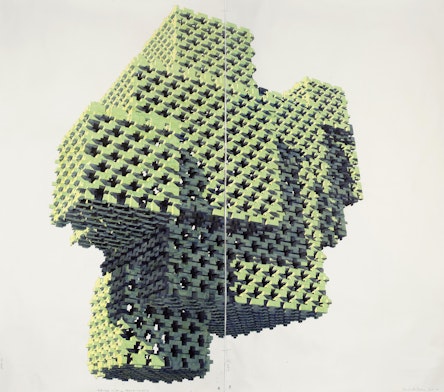
Havana, Cuba, 1992 – 2018 The Cuban group formed by Marco Antonio Castillo Valdés (Camagüey, Cuba, 1971) and Dagoberto Rodríguez Sánchez (Caibarién, Cuba, 1969), began their professional career in 1992, together with Alexandre Arrechea, who in 2003 began his solo career. In the beginning, they used recycled materials -especially wood- to make their works, and they adopted the name of their group in 1994 to embrace the union tradition of artisans and skilled workers. Fascinated by the intersection between art and everyday life, Los Carpinteros fused architecture, design, drawing and sculpture in quirky and unpredictable ways. His carefully crafted constructions promote a humorous visual language of contradiction and transformation, such as utilitarian versus useless and form versus function. His drawings and studies, which reference technical drafts and plans, poke fun at the early planning stages involved in creating art. The Los Carpinteros collective is a central piece of the puzzle in permanent (re) construction that is contemporary Latin American art. Despite the fact that these categories -regional, national or continental- are always reductionist and, in a certain sense, unsuccessful, the production of both artists is nourished by a seed from which all their works germinate: Cuba. In turn, the island shares with the continent, from the Gulf of Mexico to Patagonia, a series of circumstances that have reverberated strongly in the artistic creation of the entire region: historical facts, political-social events, a colonial wound solid and transversal like the Andes. And along with this, a cultural hybridity that defies all canons and a sense of humor capable of sustaining itself in the midst of the catastrophe. It is precisely this ambivalent character, of difficulty and enjoyment at the same time, which has been an inexhaustible source of inspiration for artists and has profoundly marked their creative universe. During its 26-year history, Los Carpinteros experimented with almost all disciplines -sculpture, photography, drawing, installation, video- using an enormous diversity of materials -wood, brick, paper, metal, plastic, concrete, fabric, among others. In all cases, his works challenge the public, causing a real intellectual check. Apparently it is a matter of form, for example, when artists manipulate or deform objects. However, in most cases, his works do not really present any physical change, they simply appear displaced from their context or their natural state. “All our figurative operations are regulated by the convention”, says Umberto Ecco. The rupture of meaning is then the great (de) construction of these artists, who called themselves 'carpenters' to contradict -although not totally- the function of a trade focused on the production of useful objects. After 26 years together, this collective was dissolved in 2018, to seek new individual horizons. However, his pieces are present in different public and private collections, such as the TATE Modern in London, the Georges Pompidou Center in Paris, the MoMA in New York or the Daros Latin America Collection in Zurich.
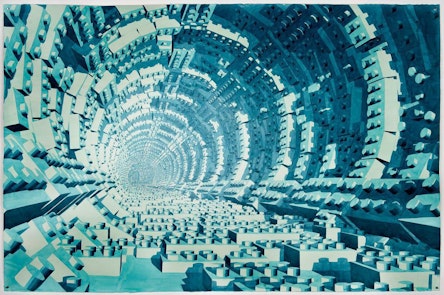
Dagoberto Rodriguez Sanchez was born 1969 in Caibarién, Las Villas and graduated from Instituto Superior de Arte (ISA), La Habana, Cuba in 1994. In 1992 he co-founded the collective Los Carpinteros. Their works have been exhibited in Museums and cultural institutions around the world, such as MOMA, Whitney Museum of American Art, Guggenheim in New York, Centre Georges Pompidou in Paris, Tate Modern in London and Museo Centro de Arte Reina Sofia in Madrid among others. Dagoberto Rodriguez is currently based working between Madrid and Habana. Combining architecture, design and sculpture, his work employs humor and irony to comment on core topics in art, politics and society. Watercolor forms a very important part of his creative process, it is a way of collaborating, registering and revising his ideas. Often these reflect a fantasy of a possible conceptual situation.